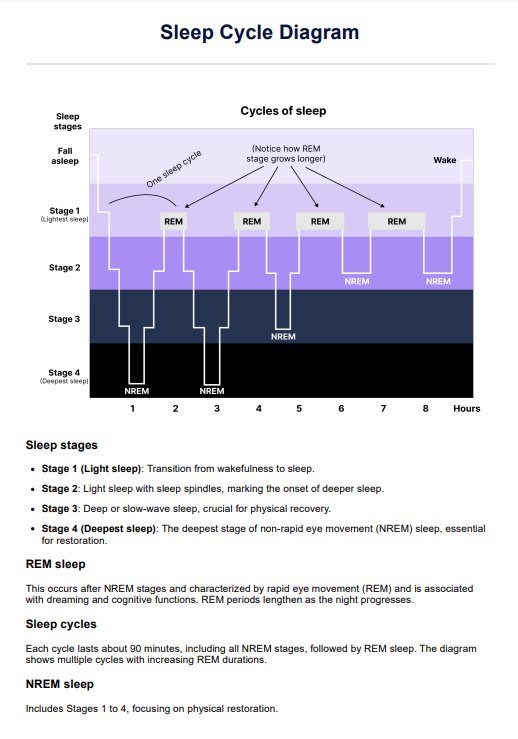A normal sleep cycle involves alternating between non-rapid eye movement or non-REM sleep and rapid eye movement (REM) sleep stages, typically every 90 minutes. It progresses from light sleep to deep sleep and then into REM sleep.

Sleep Cycle Diagram
Explore sleep cycles with our detailed diagram. Learn key structures and the importance of pedicle anatomy for spinal procedures. Download free PDF.
Use Template
Sleep Cycle Diagram Template
Commonly asked questions
There are typically four stages: Stage 1 (light sleep), Stage 2 (light sleep with sleep spindles), Stage 3 (deep sleep or slow-wave sleep), and REM sleep (active sleep).
Sleep disorders can be caused by various factors, including underlying medical conditions, lifestyle choices, and environmental factors.
EHR and practice management software
Get started for free
*No credit card required
Free
$0/usd
Unlimited clients
Telehealth
1GB of storage
Client portal text
Automated billing and online payments











